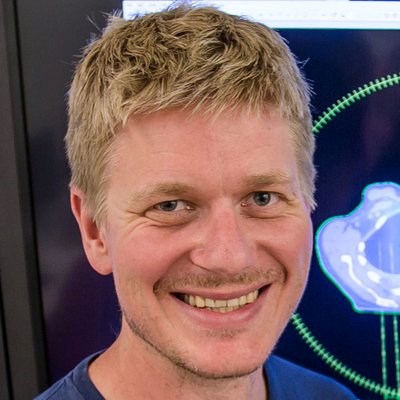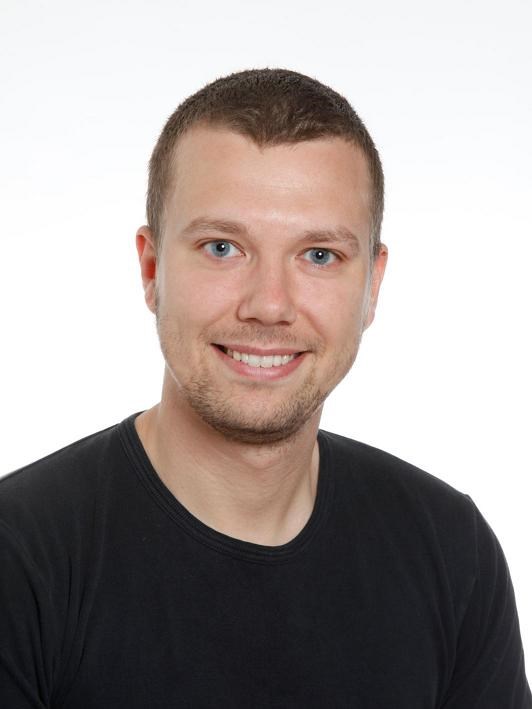Target validation and recurrence mapping
Pathology specimen after surgery (left), MR scan (middle) and PET scan (right) used to compare imaging with tumor cell position in Terzidis et al. (https://pubmed.ncbi.nlm.nih.gov/36690303/)
Introduction and aim
In radiotherapy, defining the target volume on imaging is one of the most crucial, and often also challenging steps. This challenge becomes apparent when multiple oncologists independently segment the target volume of the same patient, revealing substantial differences between observers, also know as inter-observer variation. Even when all observers agree on the target volume, it does not necessarily mean that the definition is correct, as there is no gold standard to compare it to. To address the target volume definition challenge, there are two general approaches that can help to provide additional insights. The first is to validate the target definition on imaging with histology data, which of course can only be acquired after surgery. Here the high-resolution microscopy data needs to be registered to the patient imaging data, and a detailed analysis of the target volume can be performed. The second option is to assess the treatment result, specifically by looking at local and loco-regional recurrence data. This is a more indirect assessment of target volumes, which is complicated by influence of many other factors, like safety margins, setup errors, tumor biology, etc. Therefore, recurrence mapping is dependent on sufficient data quantity.
In this work package we aim to facilitate collaboration and research in the area of recurrence mapping in routine clinical practice, to enable us to learn from every patient. The secondary aim is to facilitate collaborations in the area of target validation with histology.
Background
This is a new work package which will start in 2024. Within Denmark there have been several research papers in the area of recurrence mapping, for example within head and neck cancer: Zukauskaite et al (https://pubmed.ncbi.nlm.nih.gov/28826293/), Due et al. (https://pubmed.ncbi.nlm.nih.gov/24993331/), Sharma et al. (https://pubmed.ncbi.nlm.nih.gov/34979878/), Kutnar et al. (https://arxiv.org/pdf/2308.08396); within vulvar cancer: Vorbeck et al. (https://pubmed.ncbi.nlm.nih.gov/31126968/); and within glioblastoma: Trip et al. (https://pubmed.ncbi.nlm.nih.gov/31303079/)
For histology validation of targets, there is at least one study available in head and neck cancer: Terzidis et al. (https://pubmed.ncbi.nlm.nih.gov/36690303/).
Projects
Learn from every patient by prospectively collecting recurrence data:
This project is aimed at facilitating central storage of all imaging data and RT planning data of loco-regional recurrences. The idea is that it needs to become very easy for clinicians to identify patients with a loco-regional recurrence after radiotherapy, and to subsequently upload the data to central storage (DCMcollab). Subprojects are:
- Automate identification of patients with a recurrence
- Automate uploading of relevant imaging data
- Initiate collaboration on methods for pattern of failure analysis
- Support DMCGs by making the analysis tools available
- International collaboration
Facilitate collaboration in the area of histology validation of tumor imaging:
This is an explorative project to identify active or interested researchers in the area of histology validation of tumor imaging, and explore potential for collaboration. We will reach out to ACROBATIC (DCCC for surgical oncology) and the DMCGs.
WP leaders
Ivan Richter Vogelius and Jasper Nijkamp.
-
Jesper Kallehauge
Ph.D.
Aarhus University Hospital![]()
-
Ivan R. Vogelius
Head of Medical Physics, Professor
Rigshospitalet, Copenhagen![]()
-
Ditte Sloth Møller
Head of Medical Physics, PhD
Aarhus University Hospital![]()
-
Dennis Tideman Arp
Hospitalsfysiker, ph.d. studerende
Aalborg University Hospital![]()
-
Jasper Nijkamp
Associate professor
Aarhus University Hospital![]()






